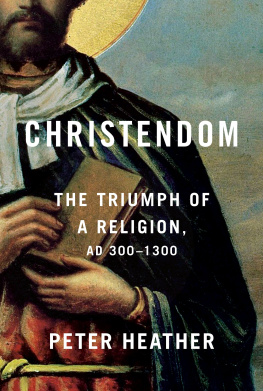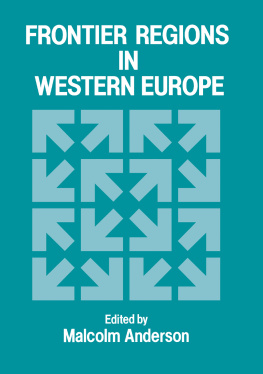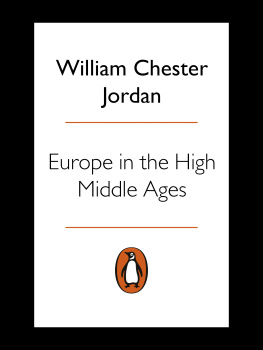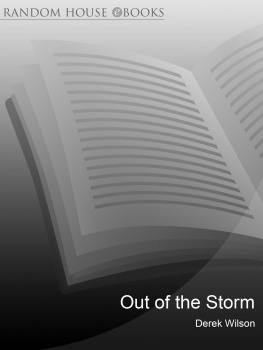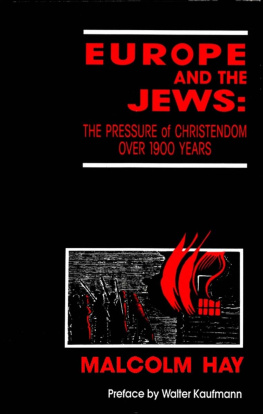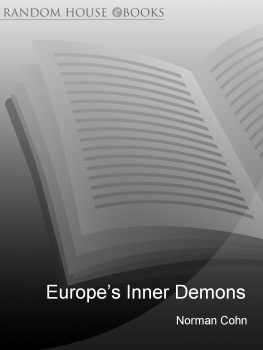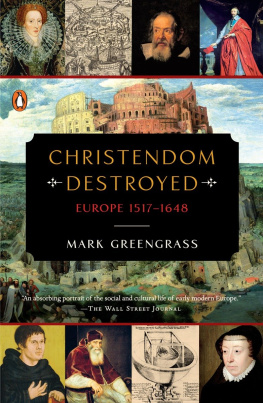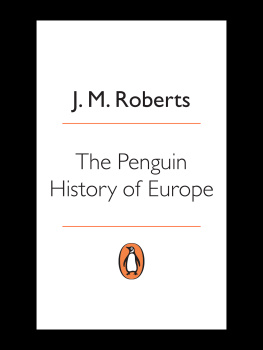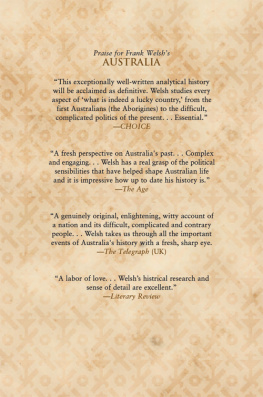VII: RICHARD J. EVANS
The Pursuit of Power: Europe 18151914
Introduction
David de Vries was proud of having seen the world. The travel account which he published in his native Dutch in 1655 recounted the six voyages which had taken him to the Mediterranean, the Far East, Newfoundland, the Caribbean, and South and North America. Born in La Rochelle to Dutch parents in 1593, he became a trained artillery master, fluent in several European languages, a skilled navigator, a shrewd man of business, an autodidact with an observant eye. It was not his fault that his colonial enterprises on the South (Delaware) river (1633), Oyapock river in Guyana (1634) and Staten Island (163843) all failed. Sponsors let him down, the local populations were difficult to manage, and competing ventures were hostile. De Vries knew where his loyalties lay. His homeland was in the Low Countries, the town of Hoorn his patria. If he had succeeded in establishing a colonial patroonship, he would have modelled it on the estates of the landed gentry of Holland as a part of the New Netherland to which he often referred. He was a Calvinist Protestant who had a hand in building the first Christian church on Staten Island. De Vries understood Europe in a wider world. Landing at St Johns, Newfoundland in 1620, after marvelling at the monumental icebergs he saw en route, he recounted the Dutch, Basque, Portuguese and English vessels that he had met, fishing and trading in those waters. With an eye already acclimatized by his reading of other travelogues, he accommodated himself to local Indian customs. Visiting the governor of the new English colonies along the James river in 1640, he was welcomed with a glass of Venetian wine and sat down with another English colonist who had also been in the East Indies in the late 1620s. I looked at him well, and he at me, says de Vries. And he heard the colonist say that mountains could not meet one another, but men who go and see the world can.
By their clothes, their food and their demeanour, these were Europeans, aware that they were on another continent, having (as de Vries said) steered the earths four corners. De Vriess career reflected the wider geographical horizons of his generation, the possibilities and challenges which they opened up, an extraordinary pluralism of contact and communication that challenged old loyalties and senses of belonging. This new sense of Europe as a geographical entity, fashioned in a reflection of the wider world, would not have existed a century before. This eclipse of the older notion of Christendom by Europe in the sixteenth and early seventeenth centuries, and the extraordinary changes that went with it, is the subject of this book.
Christendom conjures up like Camelot an imagined past. In the Middle Ages, the Latin terms for Christendom (Christianitas or Corpus Christianorum) delineated something else: an imagined present and future for a world united by its beliefs and aspirations. That belief-community emerged along with the fall of the Roman empire in the west. The Christianity that took root amid what remained of that empire was initially only the western fringe of a much wider Christian world whose heartland lay further east, towards the Middle East and in the still-active eastern (Byzantine) Roman empire. Gradually, however, and by a process of mutual estrangement, eastern and western Christianity drew apart until, in 1054, the pope in Rome and the patriarch in Constantinople mutually excommunicated one other. Following that big divide, Latin Christians were henceforth separated from Orthodox Christians in the Greek archipelago, the Balkans and Russia to form western Christendom.
In the first millennium of western Christianity, Christendom developed without any elaborate notion of where its centre lay, and therefore where its peripheries were to be found. It existed (to borrow the phrases of a distinguished medievalist) as a series of micro-Christendoms held together like a geodesic dome, composed of self-contained segments. The traffic of symbolic goods (holy relics, but also holy people, such as missionaries and saints) carried the charisma of holy power from one place to another and, with it, the values and aspirations of the belief-community from one segment to another. Then, in the Central Middle Ages, and following the rupture with the East, western Christendom developed a more elaborate sense of centre and periphery with the full emergence of two geographical and ideological units: the papacy and the Holy Roman Empire. Their claims to authority were forged competitively by theologians, lawyers, political theorists and intellectuals in an atmosphere of confident universalism. That ideal was supported by the economic transformations of the period, the impressive growth of markets and inter-regional and international trade, and by the marriages and diplomatic alliances of the aristocracy. Christendom was how learned contemporaries in the twelfth and thirteenth centuries understood the world of Latin Christians in western Europe.
The Roman Catholic Church was the central pillar of the belief-community in Latin Christianity. The intellectual lites of the latter were formed around an international language (Latin, as opposed to Greek) as well as a common curriculum (centred in matters of philosophy and logic on the works of Aristotle) and ways of study (scholasticism). Papal envoys shared with princely advisers common theocratic and bureaucratic conceptions of how power was derived, exercised and legitimated. The Crusades became western Christendoms most ambitious project. Above all, Latin Christianity was expressed in inherited and practised beliefs, mapped onto that pre-existent multi-dimensional sacred landscape of shrines, pilgrimage sites, saint cults and festivals. Baptism was a universal rite of initiation. Those who were not baptized Christians (Jews, Muslims) were a significant presence in western Christendoms margins in the Central Middle Ages, tolerated precisely because they were


